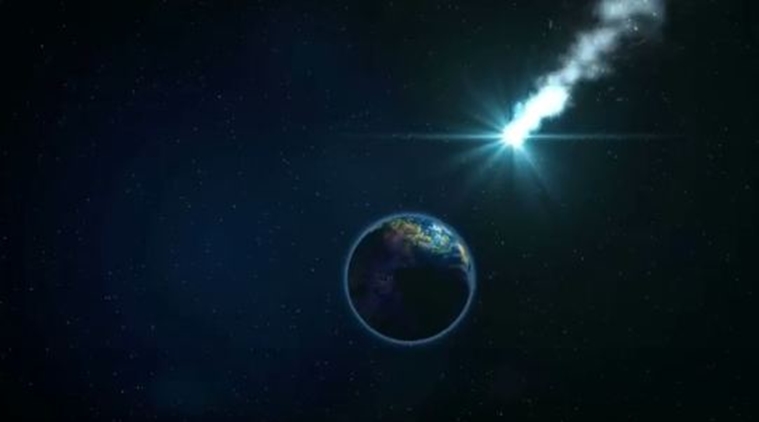 The asteroid 2018 GE3 was first spotted on April 14 just 21 hours before the asteroid’s closest approach to Earth. (Source: Youtube screengrab)
The asteroid 2018 GE3 was first spotted on April 14 just 21 hours before the asteroid’s closest approach to Earth. (Source: Youtube screengrab)
A giant asteroid the size of a football field narrowly missed crashing into Earth on April 15 whizzing by at about half the average distance between Earth and the moon. According to NASA, the asteroid measures 3.6 times the size of the one that exploded over Tunguska in 1908.
The asteroid 2018 GE3 was first spotted on April 14 by scientists in Arizona as it came halfway between the Earth and our Moon.
Asteroid 2018 GE3 flew past us today, half the distance to the Moon. Around 50-100 m in diameter, it was several times the 2013 Chelyabinsk meteor, around the size of the 1908 Tunguska event ~ easily enough to destroy a city. We had less than a day’s warning. (📷 Michael Jäger) pic.twitter.com/kElrxBiUoB
— Andrew Rader (@marsrader) April 16, 2018
“While it sounds like a joke, it isn’t,” tweeted Professor Daniel W. Bliss, of Arizona State University.
“We need to improve our planetary defenses.” replied Professor.
“If 2018 GE3 had hit Earth, it would have caused regional, not global, damage, and might have disintegrated in the atmosphere before reaching the ground,” SpaceWeather.com wrote in a Facebook post.
The asteroid was around six times as big as the one that slammed into Russia in 2013, injuring over 1,500 people and damaging thousands of buildings. The question is why didn’t the scientists catch this flying space of rock death sooner?
What are Asteroids?
Asteroids are tiny, dark rocks flying in the vastness of space. In order to see them, telescopes have to be pointed at the right spot.
Interestingly, the Earth gets hit by space rocks all the time. Every year, an asteroid as huge as a car enters our atmosphere. Luckily for us, it gets destroyed before it can cause any harm.
The asteroid 2018 GE3 was first spotted on April 14 just 21 hours before the asteroid’s closest approach to Earth.